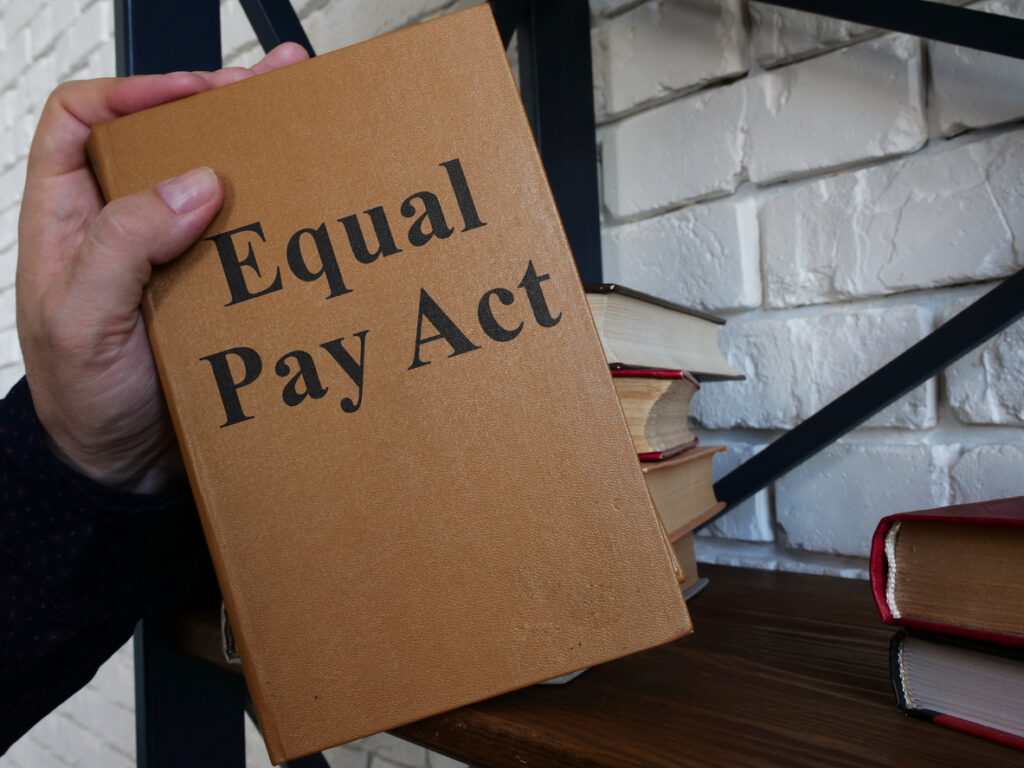Sixty years ago Congress passed the Equal Pay Act, which has resulted in significant gains for female employees toward achieving “equal pay for equal work.”
What Does The Equal Pay Act Do?
The Equal Pay Act prohibits a company from paying unequal wages to men versus women for “equal work on jobs the performance of which requires equal skill, effort, and responsibility, and which are performed under similar working conditions.” 29 U.S.C. 206(d)(1).
The goal of the Equal Pay Act is to shrink the pay gap between men and women who perform the same or very similar jobs. Notably, the jobs do not have to be identical and courts will examine the actual work performed, rather than the job title, to determine if jobs are “substantially equal,” and thus covered by the Equal Pay Act.
Likewise, the Equal Pay Act covers obvious pay such as salary and wages, as well as overtime pay, stock options, bonuses, and vacation leave and other employment benefits.
EPAeGuide_BachmanLawLegal Framework For An Equal Pay Act Case
To win an Equal Pay Act, the employee must first demonstrate that they:
- were performing “substantially equal work on the job, the performance of which required substantially equal skill, effort, and responsibility as the jobs held by members of the opposite sex;”
- “the job was performed under similar working conditions” and
- were “paid at a lower wage than members of the opposite sex.”
Cornish v. District of Columbia, 67 F.Supp.3d 345, 360-61 (D.D.C. 2014).
If the employee makes this showing, the employer then is liable for pay discrimination unless it can establish that the difference in pay resulted from:
- a bona fide seniority system;
- a merit system;
- a system which measures earnings by quantity of quality of production;
- a differential based on any factor other than sex.
29 U.S.C. 206(d)(1).
Major Gains In Closing Pay Gaps, But Much Work Remains
According to a recent study from the Center for American Progress, if the gender wage gap continues to shrink at the same rate as it did between 1963-2021, then women working full-time “will not achieve pay parity with men until 2056.”
 A common example of the pay gap is that women on average earn about $0.80 cents to every dollar earned by a man. Put another way, women are working for free about 10 weeks of the year as compared to male colleagues. And the gap falls even more acutely on women of color. For example, Black women earn approximately $0.61 cents to every dollar that White men earn.
A common example of the pay gap is that women on average earn about $0.80 cents to every dollar earned by a man. Put another way, women are working for free about 10 weeks of the year as compared to male colleagues. And the gap falls even more acutely on women of color. For example, Black women earn approximately $0.61 cents to every dollar that White men earn.
Some assessments of the gender pay gap point to variables such as men and women choosing different career paths and argue that comparing the overall wages earned by men and women is too simple. However, as pointed out in The Atlantic, even when key variables that could be impacting the pay gap are accounted for, “there’s still a statistically significant pay gap.”
The gains made toward pay equality through the Equal Pay Act are impressive but the job is far from finished. New initiatives around the country that build upon the Equal Pay Act are aimed at educating employers and employees about the wage gap with the goal of addressing and hopefully eradicating this persistent problem. As noted by the Society for Human Resource Management, a “growing number of states and localities prohibit employers from requesting salary information from job applicants and require employers to disclose the pay range for a position to applicants or employees.” These efforts, along with other pay transparency laws passed by states and local jurisdictions can hopefully put an end to the wage gap sooner rather than later.
If you have experienced employment discrimination or whistleblower retaliation, call a top rated employment attorney at (202) 769-1681, or start your preliminary consultation online.
